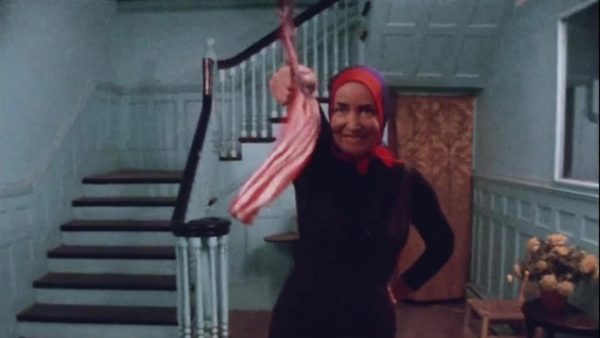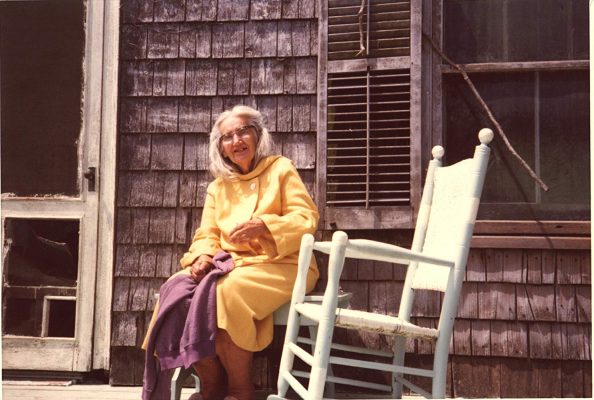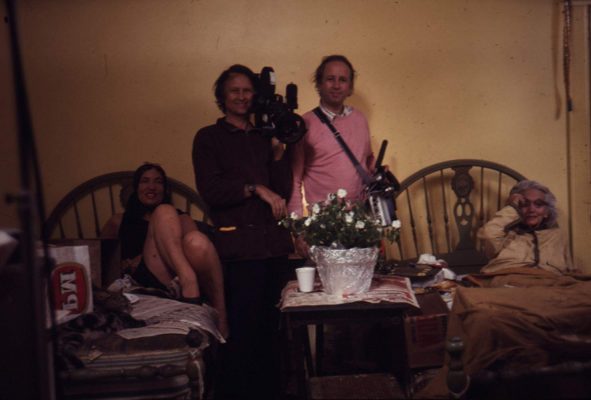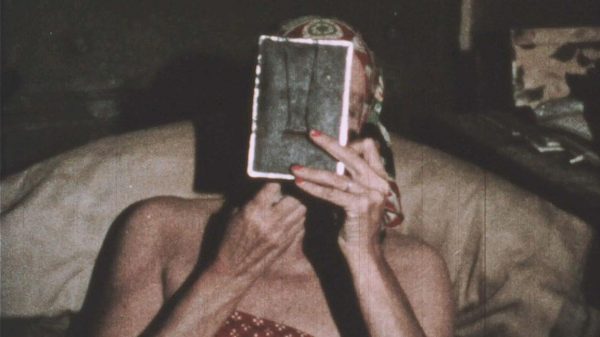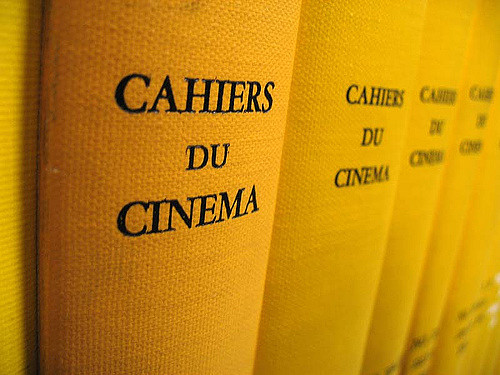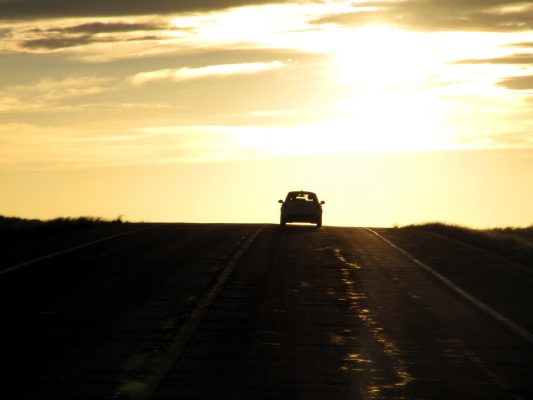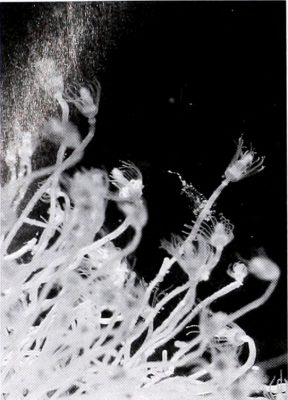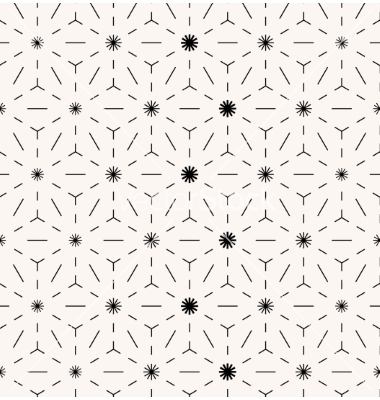Big Edie Beale, sitting bare-shouldered on the terrace, puts on her eyeglasses. The camera – manned by Albert Maysles – follows Big Edie’s line of sight across a mass of unkempt trees, to a stretch of ocean in the near distance. The camera pans back, and finds three ginger cats, half-asleep in the sunlight. Big Edie speaks throughout – her voice is captured via tape recorder, manned by Albert’s brother, David Maysles. ‘That is a beautiful ocean today. What colour would you say that is, sapphire? I’ve never seen anything like that ocean, the 50 years I’ve been here’. Big Edie calls for her daughter, Little Edie, who steps onto the terrace, wearing a black headscarf and swimming suit. A conversation develops about a cheque owed to Brooks, the gardener, who has been given the Sisyphean task of trimming the jungle-like grounds. It quickly escalates: ‘I suppose I won’t get out of here until she dies or I die’, Little Edie says, ‘I don’t like it. I like freedom’. ‘Well’, Big Edie retorts, ‘you can’t have it’.
This was Grey Gardens: a derelict mansion in the East Hamptons, lived in by the former socialites ‘Big’ Edith Bouvier Beale and her daughter, ‘Little’ Edith Bouvier Beale. In 1975, the Maysles brothers shot a feature-length documentary about the Beales, also titled Grey Gardens. The first time I watched it, I couldn’t quite believe what I was seeing: the house’s vine-wrecked facades, the raccoons in the attic, the litter-strewn and cat-filled bedrooms are shocking, their decrepitude only accentuated by the Beales’ apparent indifference towards it. Throughout the documentary’s 95 minutes, fierce arguments between mother and daughter bubble, erupt, and recede, seeming to have no lasting impact. They perpetually recycle decades of family lore – about failed relationships, missed career opportunities, long-standing grudges – the exact details of which I could only guess at. Initially, the Beales’ interminable arguments were suffocating to listen to. But on subsequent viewings my ear attuned to their conversational rhythm and to the drawl of their Mid-Atlantic accents, which seesaw so emphatically I almost want to metrically scan their dialogue.
The grotesquerie of the ruined estate, the ever-present past, the implicit tragedy and sense of entrapment; in one light, Grey Gardens is a ghost story, a Southern Gothic drama set 600 miles from the south (‘Don’t you love the overgrown Louisiana Bayou look!’, in Little Edie’s words). In another, it’s a piece of searing social commentary, an acute observation of broken-down bourgeois existence, a mutation of high society living. And then there’s the iconic joie de vivre expressed by Little Edie throughout: in one vivid scene, she sits cross-legged on the porch, in ivory-white high heels and a swimsuit, reading aloud from a paperback of Zolar’s It’s All In The Stars: ‘All I need to do is find this Libra man!’ Later, she performs a military-style dance to marching band music, twirling an American flag. Little Edie exhibits the ‘spirit of extravagance’ that Sontag claims is the hallmark of camp, the ‘proper mixture of the exaggerated, the fantastic, the passionate and the naive’. No surprise that, since Grey Gardens, Little Edie’s likeness has been repeatedly reproduced in pop culture – Drew Barrymore played her in a made-for-TV movie, Marc Jacobs released a Little Edie-inspired bag and, on an episode of RuPaul’s Drag Race, Jinkx Monsoon appears in Little Edie-drag and spectacularly outshines all the other Snatch Game queens – including, brilliantly, Marilyn Monroe.
That grotesquerie and that iconic campness partly explains why I have returned to this documentary so many times, and partly explains what I want from the Beales – but there is something more. To watch Grey Gardens and to be in the company of Big and Little Edie – beneath the estate’s untamed canopy, in the grainy half-light of the mansion’s dilapidated rooms – is to slip into the devastating, imaginative narrative of their lives. To access that narrative is an affecting experience: it asks me to confront the bewildering permutations a life, any life, might take. Is this what the Maysles intended to capture – is this how the Beales wanted to be captured?
⁂
The Beales were from a family of aristocrats and socialites, and the Grey Gardens estate was purchased by Big Edie’s husband, Phelan, in the 1920s. After a decade of living there together, their marriage fell apart; Big Edie remained in the house, relying on financial support from her family to raise her three children – her attempt at an amateur singing career hadn’t been lucrative. Later in life, Big Edie arrived at her son’s wedding dressed as an opera star, and her father, ‘Major’ Bouvier, tired of his daughter’s eccentric behavior, all but disinherited her from his will. After Major’s death in 1948, Big Edie’s health declined. Little Edie, by this time in her thirties and unsuccessfully pursuing an acting career in New York, went to live with her mother in Grey Gardens. The house gradually fell into a state of disrepair.
Big Edie’s brother – ‘Black Jack’ Bouvier, a philandering Wall Street stockbroker – was the father of Jacqueline Kennedy Onassis and Lee Radziwill. In 1972 Radziwill set out to shoot her own documentary – which would be titled Reminiscences of Old East Hampton – about her family, including her aunt and cousin, the Beales, who by this time had been living together for over 20 years. The photographer Peter Beard, a friend of Radziwill’s, joined the project. He introduced Radziwill to the Maysles brothers, whom she hired for the shoot. Several reels were shot, but the project was eventually shelved, and the footage lost until very recently. But the Maysles had found subjects in the Beales, and returned in 1974 – without, it’s rumoured, Radziwill’s blessing – to shoot Grey Gardens.
Upon its release in 1975, Grey Gardens was slated in papers such as The Village Voice and The New York Times as a shameless piece of voyeurism, and the Maysles charged with exploiting the Beales for the sake of the film. In the context of the Maysles cinematic practice, the charge of exploitation and voyeurism seems inevitable. During the sixties and into the seventies, the Maysles brothers helped pioneer a style of documentary film known in North America as Direct Cinema. As with its European counterpart, Cinema Verité (pioneered in France by Jean Rouch), Direct Cinema resists easy definition, but at its base, it sought to capture realism or ‘lived reality’: to record life as it exists before the camera, and to do so by filming subjects unobtrusively and fluidly, without anyone directing the action. Direct Cinema tended to present footage unadorned, without narrative or musical overlay, techniques which, Albert contested, reduced documentary films to ‘illustrated lectures’.
Crucial to capturing Direct Cinema’s ‘lived reality’ was the development of lightweight equipment and synchronised sound. The Maysles initially favoured a rig consisting of a modified handheld Auricon with zoom lens – this could rest comfortably on the shoulder for long periods, facilitating filming by allowing ease of movement – and a portable battery-powered Nagra tape recorder, which recorded sound at the same speed as the camera filmed. Synchronised sound meant that no audio needed to be recorded in studio, after filming. It’s difficult to imagine now – with iPhones in our pockets capable of recording high-quality synced film and audio – just how groundbreaking this type of equipment was, and what it meant for documentary and dramatic film (in 1964, Albert shot part of Jean-Luc Godard’s Six in Paris; when asked in an interview about the historic use of such mobile, synced equipment in dramatic film, Albert boasted: ‘it’s the first time it’s ever been done’).
There does, however, seem to be a paradox at the heart of the Direct Cinema ideology: how can you capture lived reality on film, when the presence of the recording equipment – and persons operating it – will impact how subjects behave? Rather than downplay their presence as documentarists, the Maysles actively courted interaction with their subjects before and during filming. In making their subjects comfortable with both their own presence and that of the recording equipment – in establishing a level of intimacy – the Maysles thought the subjects would behave more naturally. ‘To meet a total stranger, and within minutes, get that total trust… If there’s anything David and I can do, it’s exactly that,’ Albert said in a filmed 1980 interview. And David, sitting beside him, adds: ‘we have that trust in real people, we’re not trying to make them anything different than what they are. Put simply: no demands. If you don’t have any demands you can just enjoy life and the filming’. David’s insistence on ‘no demands’ reflects the golden rule of Direct Cinema – that interaction with the subjects should never evolve into direction.
In Grey Gardens, the presence of the Maysles and their involvement within the action is clear: both Beales frequently address the brothers directly, and involve them in their squabbles. Little Edie often speaks to Albert/David in a stage-whisper, as though the camera, rather than recording her for the purposes of a commercial film, were some reliable confidant. Twice, Albert pans towards a mirror, recording himself recording himself – a reflexive directorial flair that enunciates the Beales’ cyclic scrutinising of their pasts, as well as Little Edie’s compulsive monitoring of her self image. It also emphasises the sense of entrapment which permeates the film, a hall of mirrors – Big Edie’s denunciation of Little Edie’s craving for freedom. Given the Maysles’ self-aware involvement, it’s easy to see where charges of voyeurism and exploitation come from. The Maysles, it seems, are acting in bad faith: they’ve gained the Beales’ trust, manoeuvered into their private lives, and act innocently inquisitive, when, in actuality, they’re wise to the documentary gold in front of them. The potentially huge power inequity in the documentarist-subject relationship – let alone the ways that this inequity, in Grey Gardens, necessarily intersects with the male gaze – certainly isn’t resolved by the ‘no demands’ adage.
Cultural critic Vivian Sobchack, writing on another Direct Cinema film, wrote cuttingly on the viewer’s temptation to ‘donate our pity from the largesse of our cultivated sensibilities’ to the filmed subjects of Direct Cinema: ‘We remain voyeurs of the action on the screen, distanced enough to appreciate our own perceptiveness’. In believing the subjects have been exploited and pitying them for this – while nevertheless consuming the film – the viewer is ‘seduced into a sense of smugness, of self-congratulation’. Still, we should be wary of claims that the Beales were unknowingly exploited. To pity them in this way fails to account for their active, self-aware performances (among dozens of examples, there’s Little Edie’s flag dance and Big Edie’s jubilant renditions of ‘Tea for Two’ over a scratchy phonograph record) – it would deny them their agency, their intellect, even their creative freedom.
⁂
Goran Olsson’s That Summer (2018) gives us a glimpse into the genesis of Grey Gardens. The bulk of the documentary is constructed from recently unearthed footage of Radziwill and Peter Beard’s never-completed Reminiscences. Olsson is no stranger to found footage, but nor does he consider himself a simple conservationist: ‘that archival shit’, as he put it in a Q&A at the Bertha Dochouse in May. ‘What the world could use’, Olsson said, ‘is ideas, edits, analysis’. His previous films, notably Blackpower Mixtape 1967 – 75 (2011) and Concerning Violence (2014), also feature found footage: the former captures key events in the Black Power movement, where the latter is a documentary-essay about decolonisation. Olsson’s focus on social justice might make That Summer seem like a strange departure – but the director has long been fascinated with celebrity culture. In his early teens, Olsson would bike from ANC meetings, where he supported the struggle against Apartheid in South Africa, to the local library, where he’d pick up the latest copy of Andy Warhol’s Interview magazine – Olsson’s particular interest was the Manhattan arts scene, one which Radziwill and Beard were associated with.
That Summer doesn’t present the lost footage unadorned. It is bookended by a recent interview with Beard, who, at the start of the documentary, talks us through his own photographic career and reminisces about early 70s summers spent in Montauk with Radziwill and their glamorous coterie – which included the likes of Andy Warhol and Mick Jagger. Footage of these oceanside summers – some of it shot by Warhol – then plays. It’s sun-drained and choppy, everyone’s smiling, stylish, beautiful. It’s so over-idyllic as to feel mythical, and because of this, it almost hurts to watch; this apparently perfect time-capsule remains inaccessible to the viewer. Deploying the footage here sets That Summer’s predominant tone – one of dreamy, even innocent, nostalgia.
About 20 minutes in, the found footage begins to play, and Big and Little Edie appear. When I first watched the documentary, their appearance felt jarring and uncanny. I was confronted with the visibly-younger Beales in an entirely different context, and on entirely different terms, to those of Grey Gardens: the Board of Public Health, as well as the East Hampton community at large, want to kick the Beales out. Radziwill, who at first appears in the footage in the role of family archivist, spearheads a campaign to clean-up Grey Gardens (a campaign that Jackie O. also involved herself in). Listening patiently to the Beales’ concerns about the clean-up – what furniture will go, what will stay – confidently directing the workmen, speaking with excellent elocution, and dressed in an array of effortlessly stylish outfits, Radziwill is the picture of poise, the image par excellence of high society upbringing and manners. Of course, she too is aware that all of this is being filmed for the purposes of her documentary. She is acting, as Olsson has pointed out, as the audience’s guide.
But Radziwill-in-situ isn’t That Summer’s only guide. Narration by herself and Beard plays over the footage – Radziwill’s is taken from an interview conducted several years ago, Beard’s was recorded specifically for That Summer. Where Radziwill talks about how the Beales were ‘terribly attracted by the cameras’ and ‘adored to have their pictures taken’, Beard’s narration is firmly rooted in that nostalgic mode: he talks about ‘how much fun’ the shoot was, how the Beales’ lives exude ‘a great inner poetry… bringing up new ideas, talking to the cats… they were in a dream world, and that was OK’. As a device, this narration spoon-feeds us a way of interpreting the Beales: less ghost story, more fairy-tale. It also stands in firm opposition to the Direct Cinema style of the Maysles – Albert, perhaps, would have referred to That Summer as an illustrated lecture.
Whether or not we choose to go along with the narration and swallow this singular interpretation of Big and Little Edie, the lost footage shows us the beginnings of the collaboration – or duel – between the Maysles as interpreters and Beales as performers. Albert’s camerawork in the reels of That Summer is giddy, ecstatic, like he can’t believe his luck – the camera gorges itself on what it sees, searching, examining, trying to map the topography of the Beales’ lives while it has the chance. In an early scene, he shoots Little Edie coyly covering her face with a sheet of white paper, hiding herself from the camera. Later on, Albert takes a pointedly long shot of Little Edie applying lipstick, her face obscured by the back of a mirror, painted black. White to hide away, black to self-curate: this is the kind of filmic poetry that Direct Cinema aspires to, what Jean Rouch would have called a ‘privileged moment’.
And on the other hand, we see the Beales as capable and eager to bend the camera to their own ends, to intrude upon the presumed power of Albert’s lens. Big Edie, lying in bed, instructs Albert to film Little Edie standing beside an unhung portrait: the portrait is of Big Edie, in her youth, looking regal. She begins to direct Little Edie, telling her to uncross her arms. Meanwhile, Albert’s camera dances between the portrait and the grumpy, staged Little Edie – he doesn’t film both in the same shot. In this interaction, Albert attempts to deploy his male gaze unchecked, to fulfil his desire for directorial control – one gets the uncomfortable feeling that he thinks Big Edie, in her frailty, won’t even notice that he isn’t filming both Little Edie and the portrait together. It doesn’t work. Big Edie loses her patience: ‘Hey! You’re just taking Edie. I want the two things together!’ Defensively, even a bit fearfully, Albert replies: ‘…I was down there’. Moments like this show us both how easily Direct Cinema’s professed unobtrusiveness can be perverted into something that violates – or attempts to violate –, as well as showing us how the ‘lived reality’ it claims to capture can be as artificially manufactured by the documentarists as by the subjects.
Ultimately, the found footage of That Summer confirms that what we see in Grey Gardens is neither an ill-defined notion of lived reality nor a pure exploitation flick, but an intricate collaboration between the Maysles as interpreters and the Beales as performers: a constructed, co-authored reality, a kind of proto-reality TV. And any mixed feelings about the Maysles’ interaction with the Beales, the lingering sense of their exploitation, and our own complicity in it, ought to acknowledge the collaborative nature of that interaction, and the role the Beales played in both creating and curating a representation of their own lives. After Grey Gardens’s release, Little Edie said to The Times that ‘since the film’s been made, I feel so much better inside, I feel like we accomplished something’ – as though the power to partly construct a filmic version of her own reality gave her some freedom from it. And when Big Edie, nearing death, was asked whether she had any last words, Little Edie claims that she replied: ‘there’s nothing more to say. It’s all in the film’.
